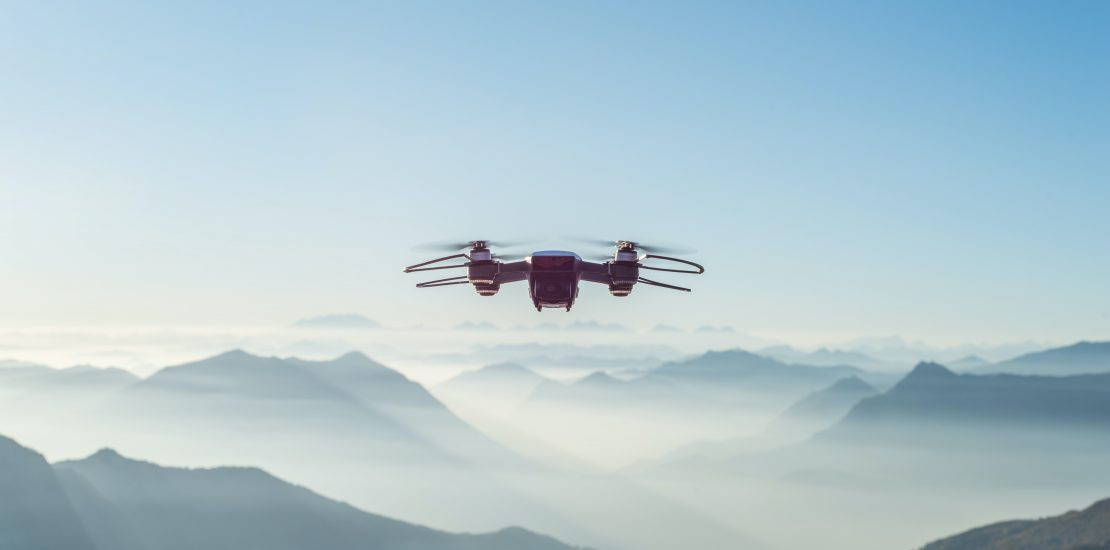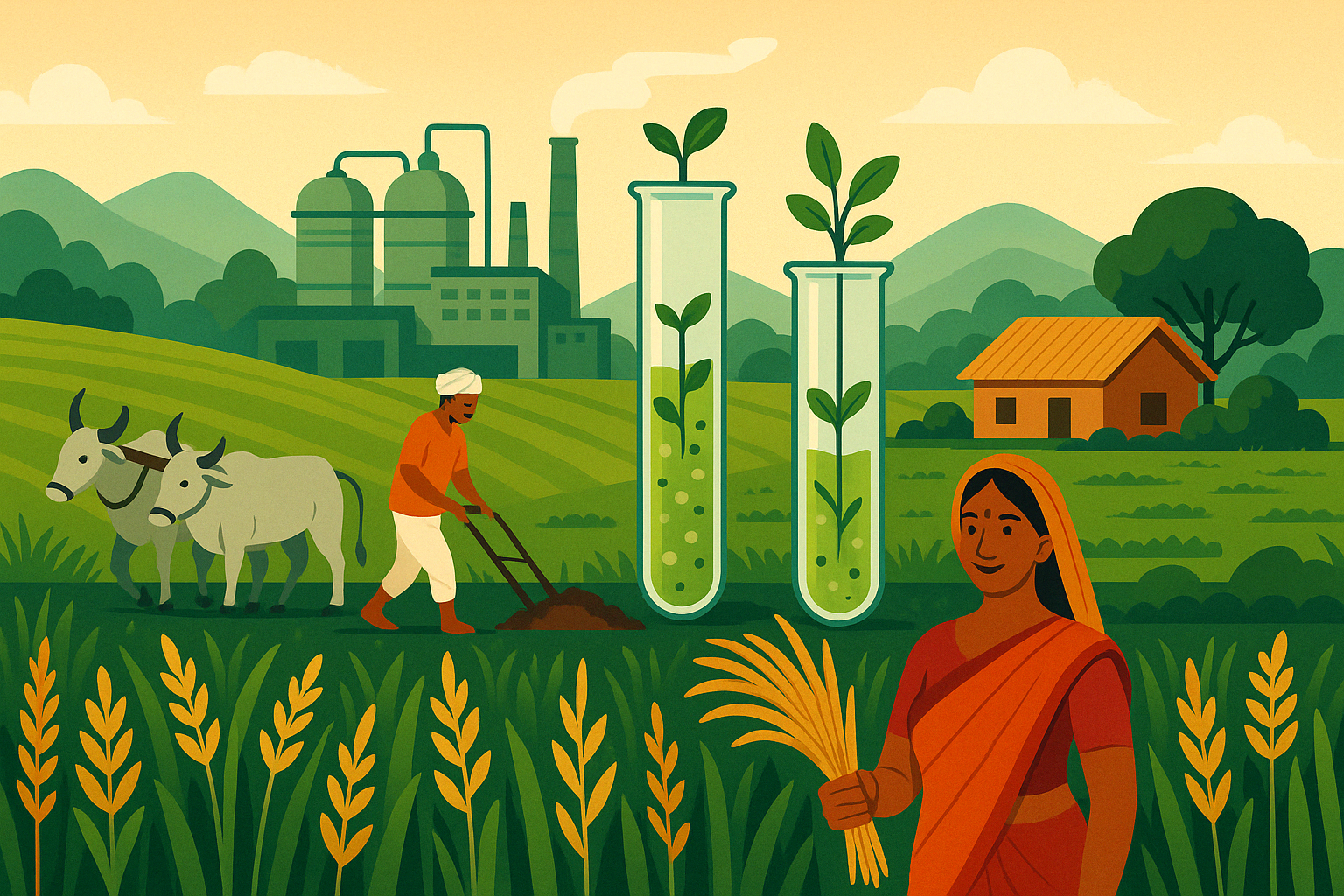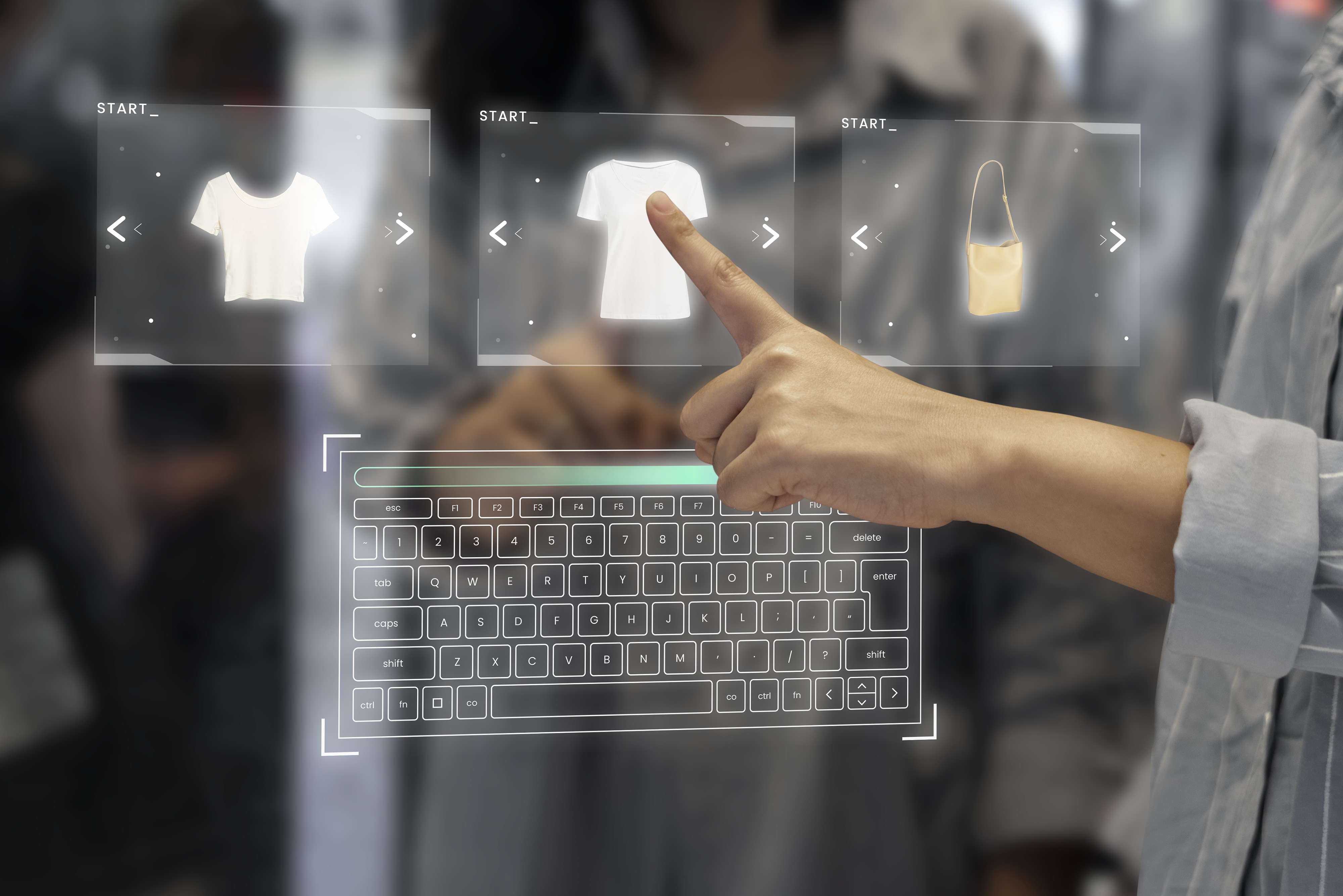Overview
Drones, also known as Unmanned Aerial Vehicles (UAVs), are no more just toys. The drone boom is happening simultaneously with the EV revolution. Microprocessors and long-distance communication have transformed drone technology, finding applications beyond the military and defence sectors. In terms of mass adoption and wide usage, it is still in the nascent stage. However, this trend will change soon since drones have become crucial for commercial and governmental purposes. This article dives deeper to explore multitudes of applications of drone technology along with the future opportunities this sector offers the stakeholders.
The Drone Technology Market is expected to grow to more than US$50 Billion, at a CAGR of more than 20% from 2022 to 2027.
Growing Drone Applications
As an aircraft without a pilot, drones have many advantages, making them the more favourable choice for various purposes. They are widely used in capturing aerial images, supervision & maintenance, 3D mapping, town planning, shipping, and delivery, gathering information and storing it for further analysis, safety inspections, monitoring, data transmission, thermal imaging, and many other uses. It is a more efficient tool in the military, defence, farming, and mobility sectors. Upon realising the significant advantages of drone tech, governments worldwide are making hefty investments in the sector. They are encouraging the use of this technology in several sectors. The private sector, including start-ups, is also moving to develop more efficient and cost-effective drones with wide-ranging applications. We explore the growing applications of drone tech in both governmental and commercial applications.
Applications of Drones in the Government Sector:
Agriculture
In agriculture, drones are already used for various purposes, such as precision crop health monitoring, soil health assessment, and field spraying. Governments worldwide are taking many initiatives to encourage the mass adoption of drone tech in this sector. Here are some examples of how drones are being used in agriculture by the government and some individual farmers:
- In February 2011, the 'Kisan Drone Yatra' included launching 100 agricultural drones made by Chennai-based Garuda Aerospace across the country to carry out various functions, such as spraying pesticides in the rural crop fields. The company aims to produce 1 lakh drones in the next two years.
- The Telangana Government has started a Hara Bhara Campaign initiative to promote reforestation using drone tech. It involves air-seeding by drones (Seedcopter drone) in the region in partnership with Marut Drones.
- During the deficit rainfalls, the Maharashtra government used drones to conduct loss assessments in the Marathwada region.
- Rajasthan Government Agri Department deployed drones for spraying chemicals and fighting off locust swarms in the state.
- Asian countries such as South Korea, Japan, Malaysia, Thailand, China, and European Countries such as Switzerland, Netherlands, France, etc., also use this technology extensively in agriculture.
- Governmental encouragement gives private businesses and start-ups a healthy environment to grow and innovate. A France-based start-up Delair, and Switzerland-based Gamaya, provide visual intelligence solutions allowing farmers to capture, manage and analyse their crops.
Urban Development
With the rising number of smart cities, drones have big ground for multitudes of applications in the urban development sector, such as city surveys, geospatial survey mapping, project monitoring, prevention of encroachments, incident reporting, and quality assessments.
- DroniTech, a drone-tech company, aims to help the Maharashtra government in urban development, using drones for timely inspection of project plans giving high-resolution and real-time data of remote areas without risk.
- Another application is in aerial surveys. Terra Drone India completed a survey of 4200 sq. km. of land for the Water Resources Department of Maharashtra Krishna Valley Development Corporation (MKVDC), providing data for irrigation and crops in half the time.
- Governments in India (Karnataka and Chandigarh), the USA, the UK and many other countries also use drones to get an aerial view of properties in the concerned areas for property tax estimation and create the city map for better planning.
- With updated technologies such as SAR, LIDAR, mini sensors, low-cost 3D printing, hyperspectral imager etc., UAVs are being put to many uses in smart cities across the globe.
Traffic Management
Another sector where drones have crucial applications is the transport and traffic management sector. It is used for road surface conditions, traffic, and feedback monitoring. With the help of this technology, the authorities can better assess the traffic situation and adapt their planning accordingly for improved traffic management.
- Indian Railway uses drones for monitoring a 25 km long Seawoods-Belapur-Uran corridor.
- The National Highway Authority of India (NHAI) uses drones in the Salem-Chennai Green Corridor expressway project to survey land accurately.
- The Maharashtra Government has deployed drones to monitor rush hour traffic on weekends and accidents in a particular area for better assessment of the situation and adaptive planning.
Defence & Security
The key demand generators in the global drone market may be the primary users of drones, the military and the defence sector. Some of the uses of drones in the defence sector are intelligence, surveillance, reconnaissance (ISR), security planning, communication in remote areas, swarm drone solutions, situational analysis, and public announcements. Countries' militaries are also developing high-tech drones for electronic attacks, strike missions, network nodes, communication relays, and combat search and rescue operations (CSAR).
The USA has been using this technology in its defence sector quite extensively. Most countries have, more or less, adopted this technology. However, China, Turkey, and the USA remain the key manufacturers of military drones across the globe.
Other Applications
Apart from these sectors, governments use drones for many other purposes, such as deliveries, food distribution, disaster management, inspections etc. Here are some examples:
Disaster Management
- To access the flood-hit areas of Uttarakhand where search and rescue teams could not go, The National Disaster Management Authority (NDMA) used drones to scan the areas.
- Several agencies used drones during Nepal Earthquake to map and assess toppled monuments, ruined heritage sites and homes in the affected areas.
- A general insurance company made use of drones in a particular district in Maharashtra to the assessment of crop damage due to floods in the year 2016.
Mining
In other countries, governments in Andhra Pradesh, Karnataka, and Jharkhand use drones to monitor stockpile storage, 3D map limestones, detect illegal sand mining, inspect coal and iron mines, count vegetation in concerned areas, and haulage road optimisation.
- Transportation and deliveries – Ministry of Civil Aviation approved the Telangana project to assess alternative logistic routes for safe and reliable pick-up & delivery of healthcare items in remote areas. The drones are deployed for delivering vaccines/ medicines to desired PHCs and other health centres. The Kutch government in Gujarat uses drones for post deliveries in remote areas.
- Telecom and Broadcasting – Drones are used in this sector for routine inspections, structural preservations, and infrastructure planning. They are used for high-quality broadcast events videography, replacing expensive helicopter-based videography.
Other areas where governments promote drone technology are power, oil and gas, monitoring of forests, pollution assessment and afforestation through seed balls.
Applications of Drones in the Commercial SectorLike the government sector, the global commercial sector is rapidly swarming with emerging start-ups with innovative drone tech, established companies including this technology, and investors putting their money into these products. As of May 2022, the USA had 865,505 drones registered in the country1. Businesses have realised infinite potential applications of drones in all industries, boosting speed, efficiency, and productivity. We are highlighting their key industries and how businesses use drones.
Transport and Logistics
Drones are transforming the world of deliveries and logistics. Big companies like Amazon Prime Air, Zomato, FedEx, DHL International, Boeing, Airbus, Drone Delivery Canada Corp. etc., have started developing or launching drone delivery services. With the help of a highly accurate collection of data and software, drones help analyse those data and use them to program the most efficient delivery routes.
- Cloud Kitchen start-ups like Zomato and Swiggy are partnering with companies like Tech Eagle and Garuda Aerospace to test their drones to deliver groceries and food to specific regions such as Delhi NCR and Bengaluru.
- Amazon started its drone delivery service called Prime Air in 2013. It helped it cut down its transportation costs.
- Not only in food and groceries deliveries, drones are also being used in logistics for pallet scanning, inventory tracking, and reaching areas inaccessible by other means of transportation. They are used to supply medical and relief packages to remote areas.
- Drone Logistic Ecosystem (DLE), a free global network of companies, universities, governments, and investors, helps stimulate innovations and standardisation in the drone logistics industry. It aims to bring together the stakeholders in the industry to support the commercialisation and marketing of standardised products.
- A German airline, German Airways, logistic company Zeitfracht group, and drone producer Wingcopter partnered to use drones for offshore deliveries to deliver, among other things, wind turbine spare parts for offshore wind farms.
Entertainment and Journalism
The media industry is actively using drones for shooting perfect bird-eye views, 360-degree shots, action sequences, and more dramatic cinematic views with the help of drones. They do not have to rely on expensive helicopter shots for this purpose. For example, Sony Pictures collaborated with Skyecam, a Los Angeles-based drone production company, to use drones during the Spider-man world premiere to live to stream the event, including a big Spider-man inflatable to give a more bird view. Drones are also highly used in movie production by small companies for aerial photography and shooting in inaccessible areas at affordable costs. Similarly, the journalism industry uses drones to replace helicopters to easily have better coverage of all locations for news gathering and assessment of the situation.
Security & Surveillance
Unmanned drones provide an easier, faster, and cheaper solution for collecting data and surveillance in narrow or confined places. They produce minimal noise and are equipped with high-quality cameras and thermal sensors, proving the perfect solution. Many companies are developing high-tech drones for this purpose. E.g., ideaForge, an Indian company that manufactures drones for defence, homeland security and industrial applications. It covers more than half of the market share in the security and surveillance segment. Another France-based company named Azur Drones developed 'no training required' surveillance drones for these purposes. Another kind is tactical drones, developed for security and defence purposes. Other applications in this sector are for tracking purposes, licence plate identification, intruder detection, event surveillance, perimeter guarding, traffic management, and border patrols.
Infrastructure & engineering
In the infrastructure and engineering sector, drones have found many crucial applications in various industries such as irrigation, energy, mining, construction, asset inspection etc.
- On construction sites, drones are used for minimally intrusive assessments to help detect minute errors in execution and to keep track of project execution.
- They are also used for bridge inspection to assess damages, compliances, and necessary repairs for building safer bridges and roads for transportation.
- In the energy industry, drones with thermal sensors are utilised to inspect solar PV panels and wind turbines in solar and wind energy farms for potential damages or defects, internal x-rays of blades, hotspots and corrosion on the surfaces.
- Even oil and gas companies use drone systems to inspect pipelines and power lines on their sites.
- Companies such as EyeROV are developing underwater drones to inspect offshore assets remotely.
The drone manufacturers, logistic companies, mobility, and transport sector also envision Air taxis' prominence as part of urban air mobility.
Key Concerns and Challenges
As much as drone tech looks lucrative to us with all its crucial applications and contributions in cutting down costs and time while increasing productivity, accuracy, and efficiency in actions, it comes with its own set of concerns necessary to note.
- The drones can be used for criminal purposes such as destroying infrastructure, delivering illegal items, or mass destruction weapons.
- UAVs can infringe upon a group or an individual's privacy. They can be employed for spying purposes to collect classified information.
- Since the drones are equipped with many sensors and are controlled via software, they can be hacked by hackers without the operator's awareness to acquire classified information, corrupt files, leak data to unauthorised parties, or other illegal purposes.
- With rapidly emerging wide-ranging applications of drone tech not only in defence and governmental uses but also for commercial and industrial purposes, there is a growing need for the proper legislature for this sector, especially for legal uses and when it comes to liabilities in case of damage.
Looking Ahead
This is just the beginning when it comes to the development of drone technologies. We still have many extensive applications and mass adoption of drones in government and private sectors, making it one of the most crucial technologies, like cameras, across industries. When it comes to India, many favourable factors are forming long-term opportunities giving a positive outlook to businesses and investors regarding the future of these technologies. The revised drone rules of 2021 liberalising the production and usage of the tech, approved PLI scheme for drones and their components along with announced programs like 'Drone Shakti' in the Indian Union Budget of 2022 are promoting Drone-as-a-service in India, giving impetus to the growth of this tech in the coming years. Globally, the drone industry is expected to reach billions in value in the next five years, driven by increasing demands and a favourable environment for the manufacturing and usage of drones. We will even see newer applications, such as using drones in outer space by NASA and other space organisations, air taxis and leisure-related applications. Moreover, technologies like AI, AR, and sensors reduce the limitations on what drones can do and increase the scope for a more robust drone ecosystem.
The opportunities in this sector are limitless, just to be witnessed and capitalised on in the coming years. Currently, countries like China, Turkey and the USA are the only major manufacturers and exporters of drones worldwide. However, the favourable policies, investments, and rising number of emerging companies in the sector will make countries like India achieve the leading position and become the manufacturing hub.






